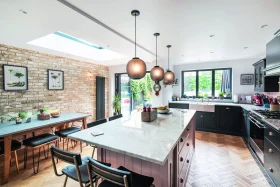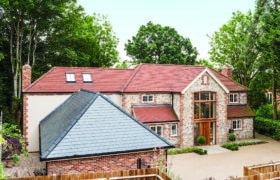

Smart technology has worked to revolutionise the functionality of so many elements of our homes – from reducing energy bills through to enhancing security.
Giving the house a brain benefits all members of the family, but an area where it can make a huge difference is when it offers independence for those who might otherwise need to rely on family members or carers for daily interactions with their home.
Accessible design is no longer associated with clinical architecture – and we’ve shown numerous examples in our readers’ homes of how updating or building a property from scratch is a great way to create an inclusive space that’s practical as well as homely.
In fact, many people taking on a bespoke project recognise the benefit of future-proofing to ensure they can stay in their property for as long as possible, whether that’s simply by widening doorways or even creating space for a lift to be installed if needed.
But adding smart technology into the equation means that daily tasks such as opening blinds or turning on lights can be done at the touch of a button on a smartphone, or even set up to be automated, which is ideal for those with limited mobility.
Learn more: Create a Smart Home on Any Budget
“Smart homes help people to live independent lives because they can control and see things without moving around,” says Stephen Chard, co-founder of Baulogic. “Being able to control every aspect of your home – including security, heating and lighting – from one centrally-placed touch screen or mobile phone app is not only convenient but brings peace of mind.”
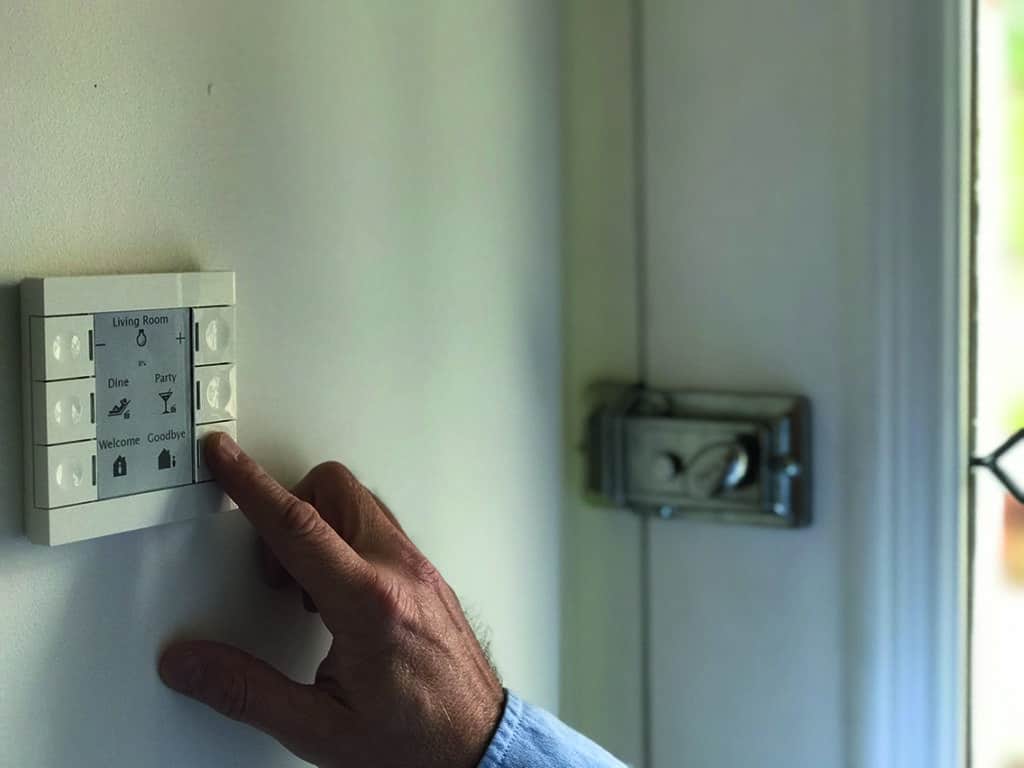
Smart switches from Baulogic include settings to turn lights on when arriving home or off when leaving
Andy Moss, managing director of Moss Technical, says he’s seen clients’ lives transformed by smart tech: “In 2018 we won the Best Accessible/Inclusive Home category at the Build It Awards for a project where our Niko installation helped a woman who needed live-in carers.
The smart system offered control of everything in her house, so she was able to regain independence, as well as save a fortune because she didn’t need carers there all the time anymore.”
The Lifetime Homes initiative sets out the criteria for inclusive design. It doesn’t currently specify smart technology, but there are elements mentioned that could be supported or even enhanced by the latest gadgetry.
For instance, the standard states that sockets, switches and controls should be placed at heights suitable for wheelchair users – but linking them to a smart system takes that control element to another level.
Voice activation is fairly popular these days, with many people using the likes of Amazon Alexa and Google Home for simple tasks, but if that kind of technology is linked up to a whole house system, you could do anything from turning on the heating to setting the alarm.
You can also pre-programme phrases to be used in an emergency – a certain word can notify family, unlock the door, flash lights and create a setup that means responders and blue light services can get straight in to help, unhindered.
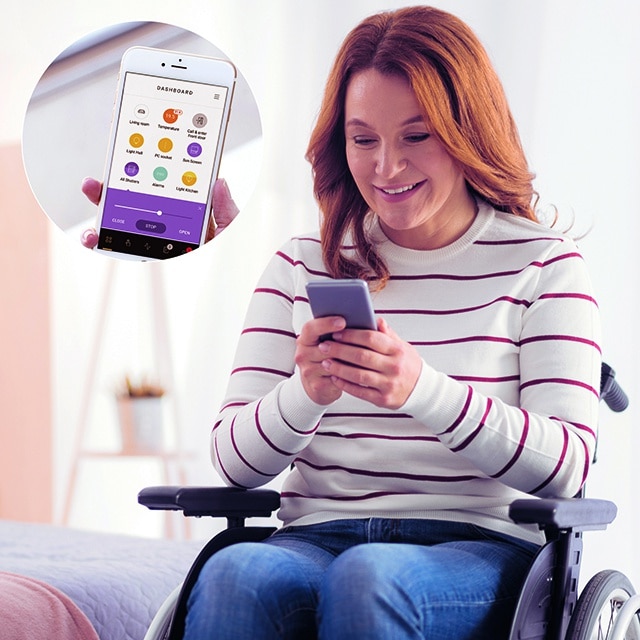
Moss Technical offer the Niko Home Control system, which comes with a range of control options, including via smart phone or tablet
When it comes to peace of mind for family, there are so many benefits to using smart technology. If the kitchen light that your mum always turns on by 9am to make a morning cup of tea doesn’t get switched on, you can be alerted and go round to check that everything is okay. Or if a relative with dementia opens the front door in the middle of the night, you can be notified.
You might be wondering whether smart technology is difficult to use. Well, the answer is that it doesn’t have to be; and can still be easy to control for those that aren’t as comfortable or keen on using smart technology.
“The key is simplicity,” says Stephen from Baulogic. It’s important that the setup works for the person that will be using it. If you’re spearheading a project for an elderly relative, for example, they might disagree with what you believe to be a simple system – so stay open and listen to their concerns.
Can smart technology go out of date?Home technology changes all the time, but you don’t need to worry about your system falling behind the times, as most devices will notify you if an update is available. And with more and more products being released with smart capabilities – from kettles to door bells – you can easily integrate new elements into your whole house control. Learn more: How to Plan a Smart Home “Our installers will keep in contact every six months or so, advising about technology and maintaining good relationships,” says Andy Moss from Moss Technical. “It’s hugely important that your installer is knowledgeable about what’s possible and the products available, so always go for a reputable brand and make sure you get a good vibe. Your smart home professional should be involved in the design stages, as well as the first trade in when your self build project gets to weathertight, to make sure everything is planned properly, and the last one out to make any final tweaks after everything else is completed.” |
Andy Moss compares a whole house smart setup to the inner workings of a car, in that there are always extra gizmos that are tempting to add, but perhaps unnecessary. “Any installation can be made complicated, with all kinds of settings,” he says.
“But keep it simple, let it be truly smart and work efficiently in the background – of course, there are people who like to have all the fancy gadgets, but it doesn’t have to be like that.”
A smart system can also be intelligent and intuitive. For instance, the hallway lights might turn on when you come through the door, but the brightness is relative to the time of day to avoid glare (indeed the whole lighting design might be developed around your level of vision).
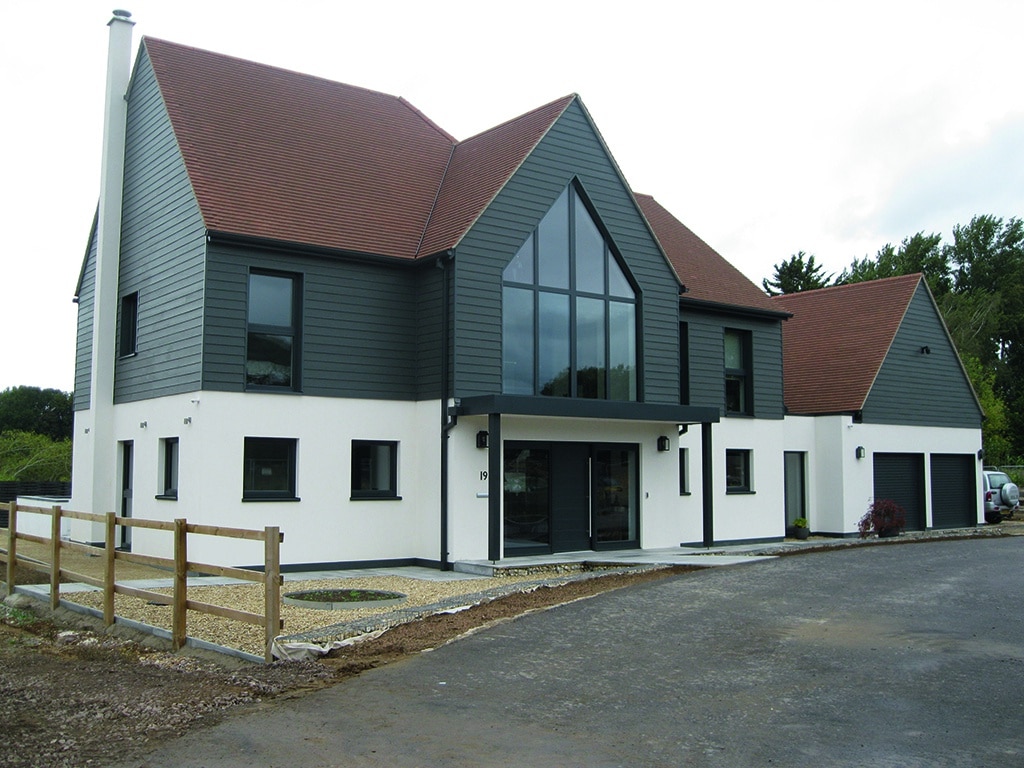
Swindon Home Control worked with a retired couple to integrate lighting, heating, blinds/curtains, ventilation and garage doors into a whole house smart setup that’s easy to use and futureproofs their self built home
Or the extractor fan turns on 10 minutes after the light goes on in the bathroom, but not if it’s the middle of the night and could disturb people’s sleep. “The same system can be set up to act differently at different times even though it’s the same button you’re pressing,” says Andy.
As with every element of your home, you can decide to pump as little or as much budget into it as you feel is right. There are various levels to what can be achieved and that doesn’t necessarily mean the system will be less smart.
When it comes to inclusive design, the priority should be creating an environment that supports independence and efficiency. So you might feel that, for example, focusing budget on being able to link up and control your lighting and heating via one button takes more precedence over specifying high end alu-clad window frames.
The beauty of creating a bespoke home is that it’s tailored exactly to you. And even if there are elements that you really want, but can’t afford at the time, such as motorised blinds, then you can have the cables put in place ready for those to be added later on. “Early design is so important; infrastructure and smart technology are the way ahead,” says Andy.
